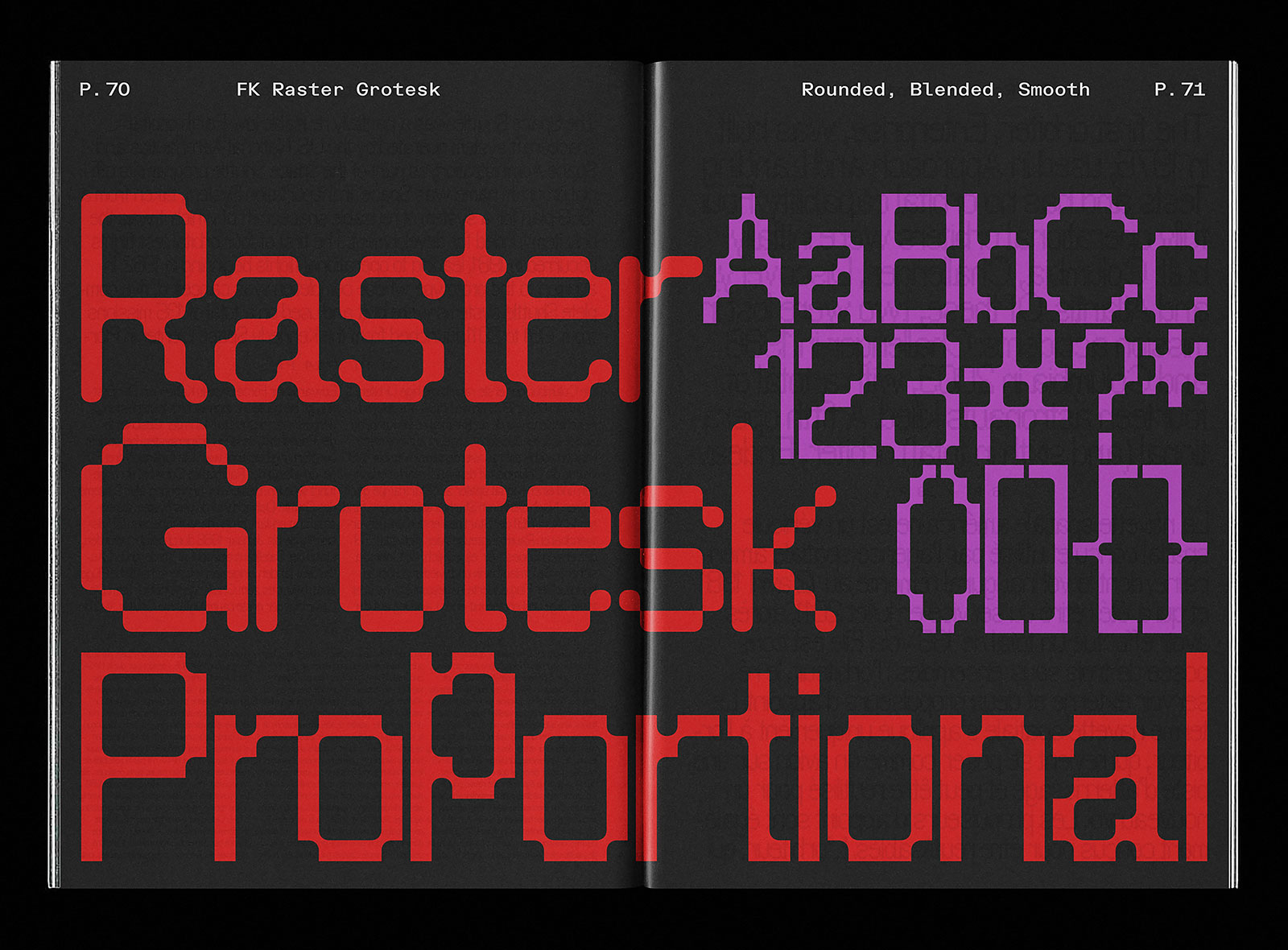FK Raster Grotesk is a pixel-based sans-serif typeface, sharpest at the 12-pixel size. Its Compact variant partially abandons the pixel grid and serves as a tightly spaced display typeface, carefully kerned to leave no superfluous gaps. The variable font smoothly transitions between sharp, pixelated form to completely rounded shapes, creating strong contrasts between the two states.
FK Raster Grotesk supports Latin Extended-A character set (i.e. Western European, Central European and Southeastern European languages) and several OpenType features. For complete specs see typeface specimen.
- Designer
Květoslav Bartoš
- Publisher
Florian Karsten Typefaces
- Release date
December 2019
- Version
1.0.2 (June 2020)
- Formats
Static (OTF, TTF, WOFF, WOFF2), Variable (TTF, WOFF, WOFF2)
- Glyphs
471
- OpenType features
Standard Ligatures, Case Sensitive Forms, Fractions, Numerators, Denominators, Scientific Inferiors, Superscript, Subscript, Oldstyle Figures, Lining Figures, Proportional Figures, Tabular Figures, Slashed Zero
- Language support
Afrikaans, Albanian, Asturian, Azerbaijani, Basque, Bemba, Bosnian, Breton, Catalan, Cornish, Croatian, Czech, Danish, Dutch, English, Esperanto, Estonian, Faroese, Fijian, Filipino, Finnish, French, Frisian, Friulian, Galician, Ganda, German, Hungarian, Icelandic, Indonesian, Irish, Italian, Kinyarwanda, Klingon, Latvian, Lithuanian, Luxembourgish, Makhuwa, Maltese, Norwegian, Polish, Portuguese, Romanian, Romansh, Sango, Scottish Gaelic, Serbian, Shona, Slovak, Slovenian, Somali, Spanish, Swahili, Swedish, Swiss German, Turkish, Uzbek, Welsh, Zarma, Zulu
- Licensing
A basic license purchased via this website combines desktop and web license and covers installation on a given number of workstations within one organisation and allows you to self-host webfont files for a single domain with no time limitation for a given number of unique visitors per month. For more information about other licensing options, please check FAQ or get in touch.



